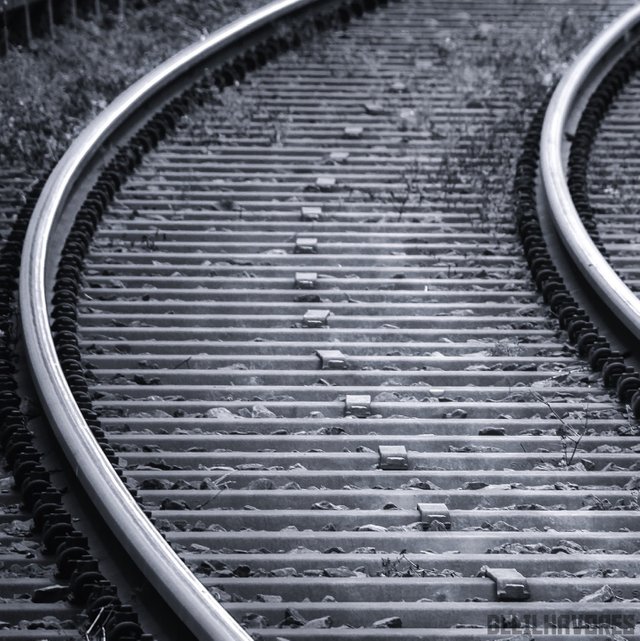Iron in the periodic table of the elements – Il ferro nella tavola periodica degli elementi
Introduction
Iron is the chemical element with atomic number 26 and its symbol Fe is an abbreviation of the word ferrum, the latin name of metal. It is possible to find the iron in three oxidation states: 0, +2 and +3.
It is a reducing metal, in fact it is also oxidized by non-oxidizing acids such as HCl:
Fe + 2H + -> Fe2+ + H2
Atmospheric O2 is able to oxidize Fe2+:
O2 + 4 Fe2+ + 4H+ -> 4 Fe3+ + 2H2O
Iron forms complexes with coordination number = 6.
Biological interactions
Iron is classified as essential trace element. The average daily dose is 5-15 mg, the average quantity in humans 4-5 g. The metal is found in spinach, artichokes and strawberries and is better assimilated by the meat.
Iron is the structural inorganic component of hemoglobin (Hb), a metal-protein responsible for transporting oxygen in the blood, contained in red blood cells to which it gives the red color. The Hb is made up of a protein and a non-protein part called "heme". The heme is formed, in turn, by a ferrous chelate in which a tetra-nitrogen (circular) annular structure (porphyrin) contains a Fe2+ ion engaged in six coordination bonds.
In place of O2, it is also possible to bind molecules such as CO and CN, preventing the transport of O2 and causing the death of cells by anoxia; If the cation is Fe3+, other ions can also be bound and the ability to release O2 is lost, which leads to meta-hemoglobinemia.
Another protein that has within itself Fe2 + is myoglobin, located in the muscles; It is capable of accumulating O2 and releasing it in anaerobic efforts.
The Fe2+/Fe3+ pair located within the respiratory enzymes, the cytochromes, is essential for the functioning of the respiratory chain.
Iron deficiencies cause anemias.
The Fe2+ ion is absorbed through the intestinal mucosa and transported by transferrin. An abnormal absorption of Fe2+ can damage liver, pancreas and spleen and prolonged exposure causes cancer. The Fe3+ ion has irritant properties for the gastrointestinal, emetic and coagulant mucosae.
Compounds of pharmaceutical interest
In Pharmacopoeia we can find:
- Yellow and red iron oxide: They are used as colorants for pharmaceutical and food preparations;
- Ferrous fumarate: In low doses it has antianemic, tonic and reconstituting properties, at high doses it is emetic;
- Ferrous gluconate: It has the same properties as the previous one, but it is more easily absorbed and does not produce gastroenteric irritations;
- Ferrous sulphate heptahydrate: It has the same uses as the previous one.
Analytical reactions
The recognition of the iron can be based on the following reactions:
- Potassium hexacyanoferrate precipitates Fe2+ as ferrous and potassium hexacyanoferrate with characteristic Turnbull blue color:
Fe2+ + K+ + [Fe(CN)6]3- <-> KFe[Fe(CN)6]
- In a solution of HCl the Fe3+ ion forms, with ammonium or potassium thiocyanate, the blood-red ferric thiocyanate:
Fe3+ + SCN- <-> [Fe(SCN)]2+
- Potassium hexacyanoferrit precipitates the Fe3+ ion as ferric and potassium hexacyanoferrit with characteristic Prussian blue color:
Fe3+ + K+ + [Fe(CN)6]4-<-> KFe[Fe(CN)6]
- NaOH precipitates Fe3+ as red-brown hydroxide and Fe2+ as green colored hydroxide:
Fe3+ + 3OH- <-> Fe(OH)3
Fe2+ + 2OH- <-> Fe(OH)2
ITA
Introduzione
Il ferro è l'elemento chimico di numero atomico 26 e il suo simbolo Fe è un'abbreviazione della parola ferrum, il nome latino del metallo.
È possibile trovare il ferro in tre stati di ossidazione: 0, +2 e +3.
Si tratta di un metallo riducente, infatti viene ossidato anche da acidi non ossidanti come HCl:
Fe + 2H+ -> Fe2+ + H2
O2 atmosferico è in grado di ossidare Fe2+:
O2 + 4 Fe2+ + 4H+ -> 4 Fe3+ + 2 H2O
Il ferro forma complessi con numero di coordinazione = 6.
Interazioni biologiche
Il Ferro è classificato come oligoelemento essenziale. La dose giornaliera media è di 5-15 mg, la quantità media nell’uomo 4-5 g. Il metallo si trova in spinaci, carciofi e fragole ed è meglio assimilabile dalla carne.
Il ferro è il componente inorganico strutturale dell’emoglobina (Hb), metallo-proteina deputata al trasporto dell’ossigeno nel sangue, contenuta nei globuli rossi ai quali conferisce la colorazione rossa. L’Hb è costituita da una parte proteica ed un’altra non proteica detta “eme”. L’eme è costituito, a sua volta, da un chelato ferroso in cui una struttura anulare (circolare) tetra-azotata (porfirina) racchiude uno ione Fe2+ impegnato in sei legami di coordinazione.
Al posto dell’O2 si possono legare anche molecole come CO e CN, impedendo il trasporto di O2 e provocando la morte delle cellule per anossia; Se il catione è Fe3+ si possono legare anche altri ioni e si perde la capacità di rilasciare O2, ciò porta a meta-emoglobinemia.
Un’altra proteina che possiede al suo interno Fe2+ è la mioglobina, situata nei muscoli; Essa è capace di accumulare O2 e di rilasciarlo negli sforzi anaerobi.
La coppia Fe2+/Fe3+ situata all’interno degli enzimi respiratori, i citocromi, è essenziale per il funzionamento della catena respiratoria.
Carenze di ferro causano anemie.
Lo ione Fe2+ è assorbito attraverso la mucosa intestinale e trasportato ad opera della transferrina. Un abnorme assorbimento di Fe2+ può danneggiare fegato, pancreas e milza e l’esposizione prolungata provoca neoplasie. Lo ione Fe3+ ha proprietà irritanti per le mucose gastroenteriche, emetiche e coagulanti.
Composti di interesse farmaceutico
In Farmacopea possiamo trovare:
- Ferro ossido giallo e rosso: Vengono utilizzati come coloranti per preparazioni farmaceutiche e alimentari;
- Fumarato ferroso: A basse dosi possiede proprietà antianemiche, toniche e ricostituenti, ad alte dosi è emetico;
- Gluconato ferroso: Ha ltesse proprietà del precedente, ma è più facilmente assorbibile e non produce irritazioni gastroenteriche;
- Ferroso solfato eptaidrato: Presenta gli stessi usi del precedente.
Reazioni analitiche
Per il riconoscimento del ferro ci si può basare sulle seguenti reazioni:
- L’esacianoferrato di potassio precipita Fe2+ come esacianoferrato ferroso e potassico con caratteristico colore blu di Turnbull:
Fe2+ + K+ + [Fe(CN)6]3- <-> KFe[Fe(CN)6]
- In soluzione di HCl lo ione Fe3+ forma, con tiocianato d’ammonio o di potassio, il tiocianato ferrico di colore rosso sangue:
Fe3+ + SCN- <-> [Fe(SCN)]2+
- L’esacianoferrito di potassio precipita lo ione Fe3+ come esacianoferrito ferrico e potassico con caratteristico colore blu di Prussia:
Fe3+ + K+ + [Fe(CN)6]4-<-> KFe[Fe(CN)6]
- NaOH precipita il Fe3+ come idrossido di colore rosso-bruno e il Fe2+come idrossido di colore verde:
Fe3+ + 3OH- <-> Fe(OH)3
Fe2+ + 2OH- <-> Fe(OH)2



Hello,
Your post has been manually curated by a @stem.curate curator.
We are dedicated to supporting great content, like yours on the STEMGeeks tribe.
If you like what we are doing, please show your support as well by following our Steem Auto curation trail.
Please join us on discord.
Congratulations @delilhavores! You have completed the following achievement on the Steem blockchain and have been rewarded with new badge(s) :
You can view your badges on your Steem Board and compare to others on the Steem Ranking
If you no longer want to receive notifications, reply to this comment with the word
STOPVote for @Steemitboard as a witness to get one more award and increased upvotes!
Questo post è stato condiviso e votato all'interno del discord del team curatori di discovery-it.
This post was shared and voted inside the discord by the curators team of discovery-it
bel post...molto interessanti gli usi del ferro